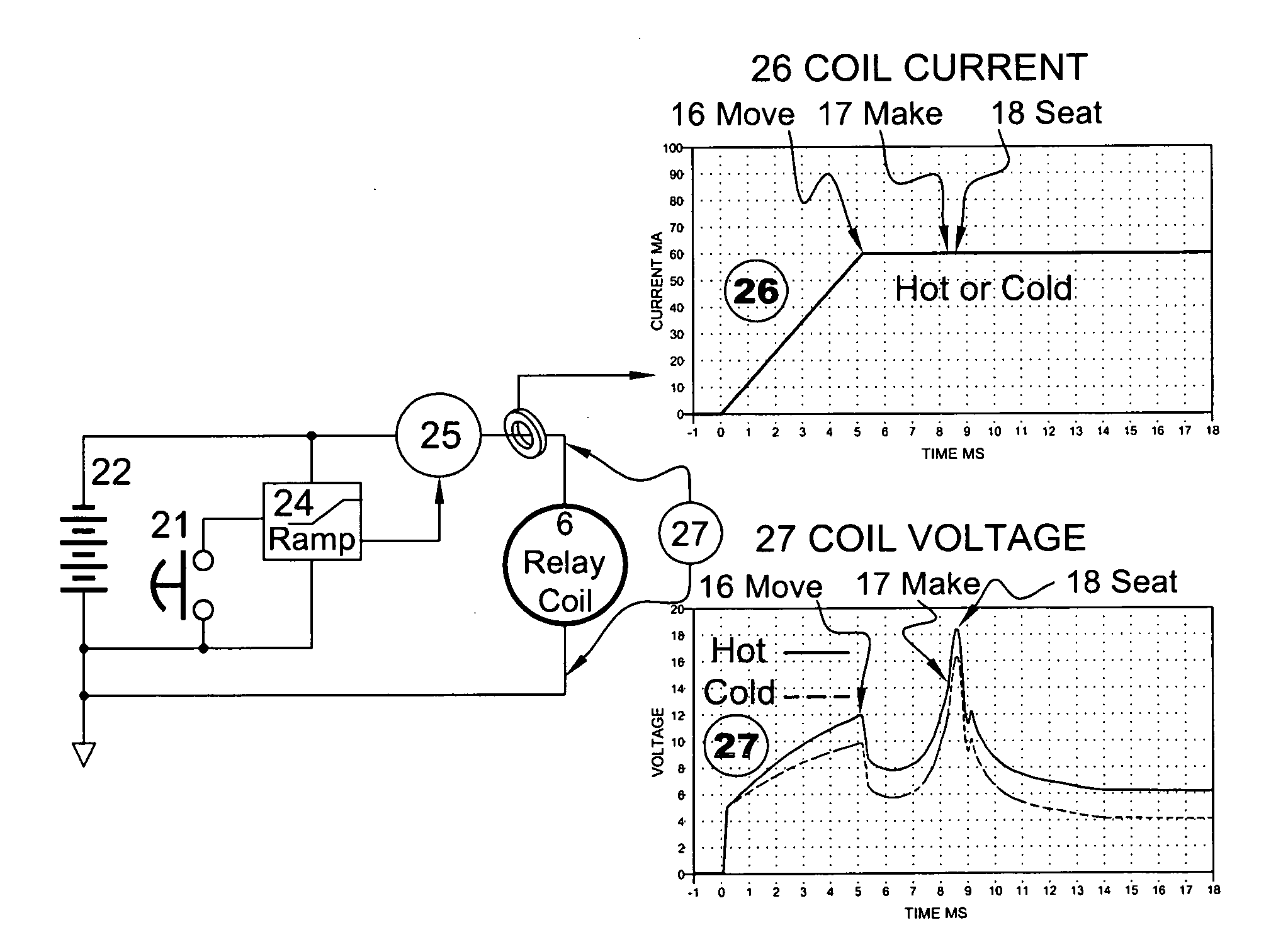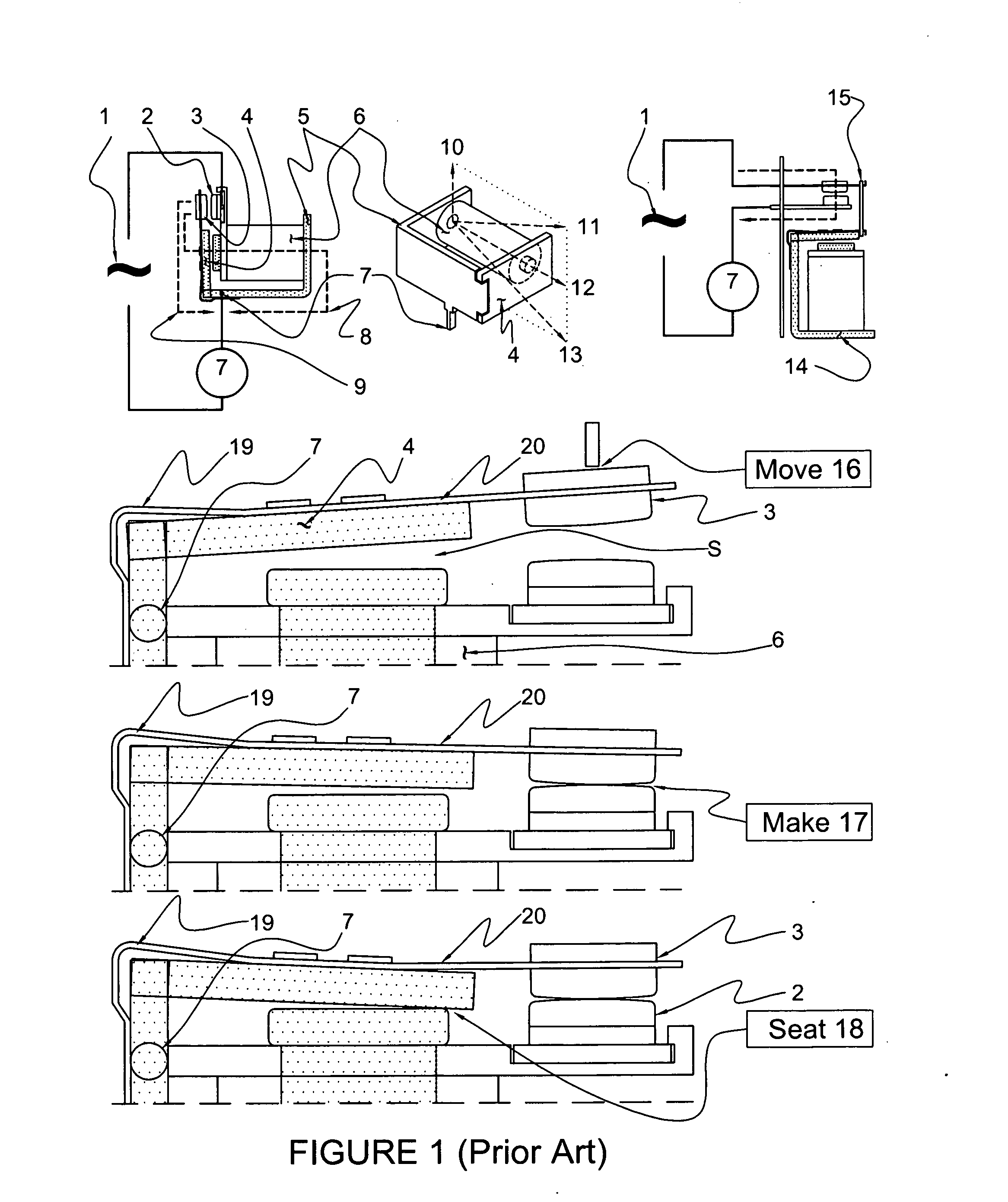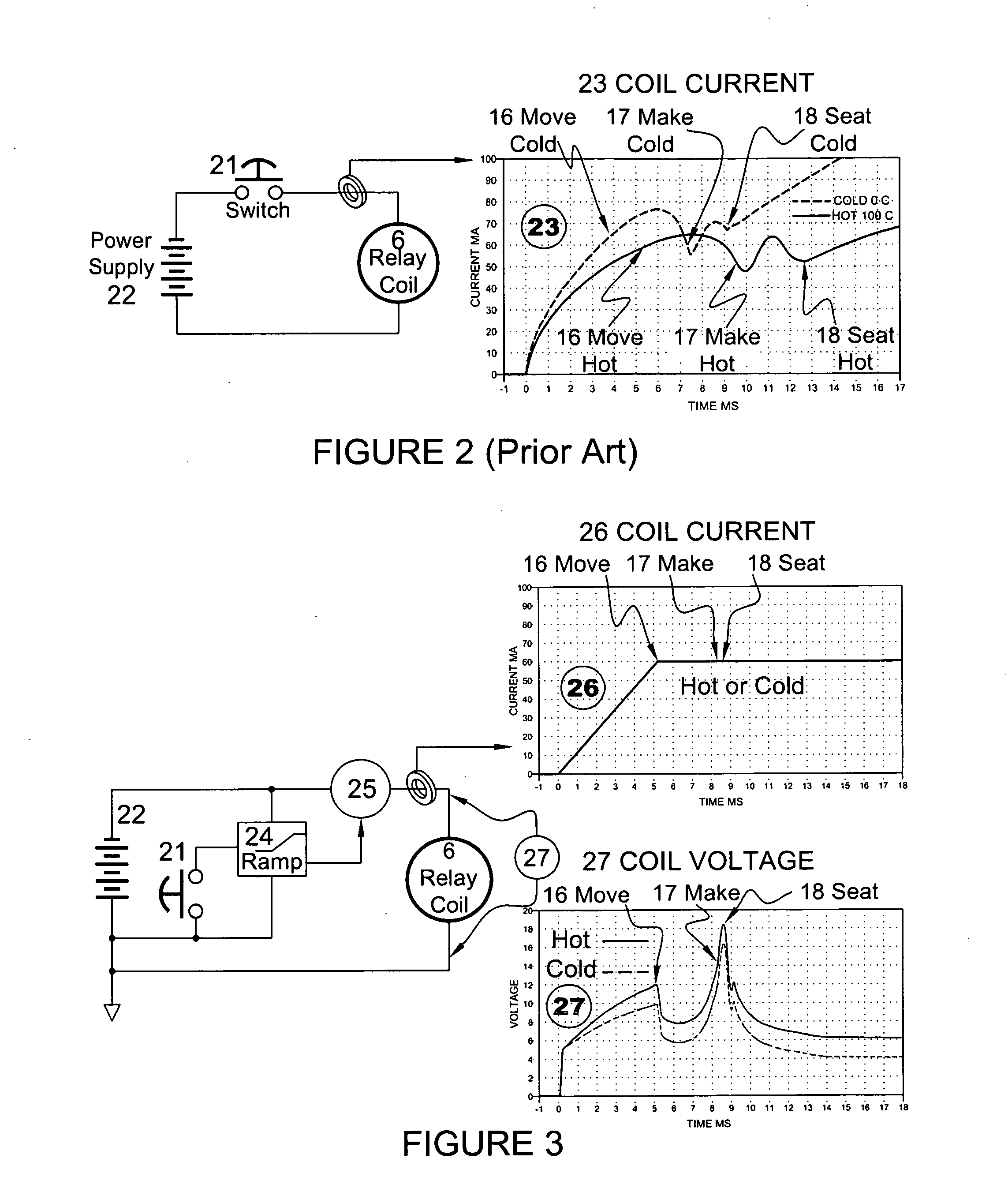Relay Coil Drive Circuit
a technology of relay coil and drive circuit, which is applied in the direction of relays, electromagnetic relays, electrical apparatus, etc., can solve the problems of wasting more power than the contactor itself, requiring a significant amount of power to operate, and the transformer can be larger, so as to reduce the prolonged low pressure
- Summary
- Abstract
- Description
- Claims
- Application Information
AI Technical Summary
Benefits of technology
Problems solved by technology
Method used
Image
Examples
Embodiment Construction
[0029]Wrestling current control away from the PC-relay coil solves much of its operational problems and tightly controls its timing. This is made difficult by the relays tendency to control its own current. A simple current / voltage source switched into the coil at time zero cannot produce current for a long time. Defeated by the relay coil's infinitely efficient (di / dt) rebalancing of the equation. Such rebalancing will include (iR) temperature problems and (dL / dt) armature movement problems. The inventive means therefore controls both (di / dt) and (i). Since it is impossible to solve the relays operational problems after it finishes operating, the invention regulates (di / dt) and (i) beginning at time zero.
[0030]FIG. 3 illustrates the inventive system; Pressing switch (21) at time zero starts ramp (24) which profiles the current coming from the output of an externally controlled current source (25). The preferred embodiment's have a current controlled current source (current mirror) ...
PUM
 Login to View More
Login to View More Abstract
Description
Claims
Application Information
 Login to View More
Login to View More - R&D
- Intellectual Property
- Life Sciences
- Materials
- Tech Scout
- Unparalleled Data Quality
- Higher Quality Content
- 60% Fewer Hallucinations
Browse by: Latest US Patents, China's latest patents, Technical Efficacy Thesaurus, Application Domain, Technology Topic, Popular Technical Reports.
© 2025 PatSnap. All rights reserved.Legal|Privacy policy|Modern Slavery Act Transparency Statement|Sitemap|About US| Contact US: help@patsnap.com



